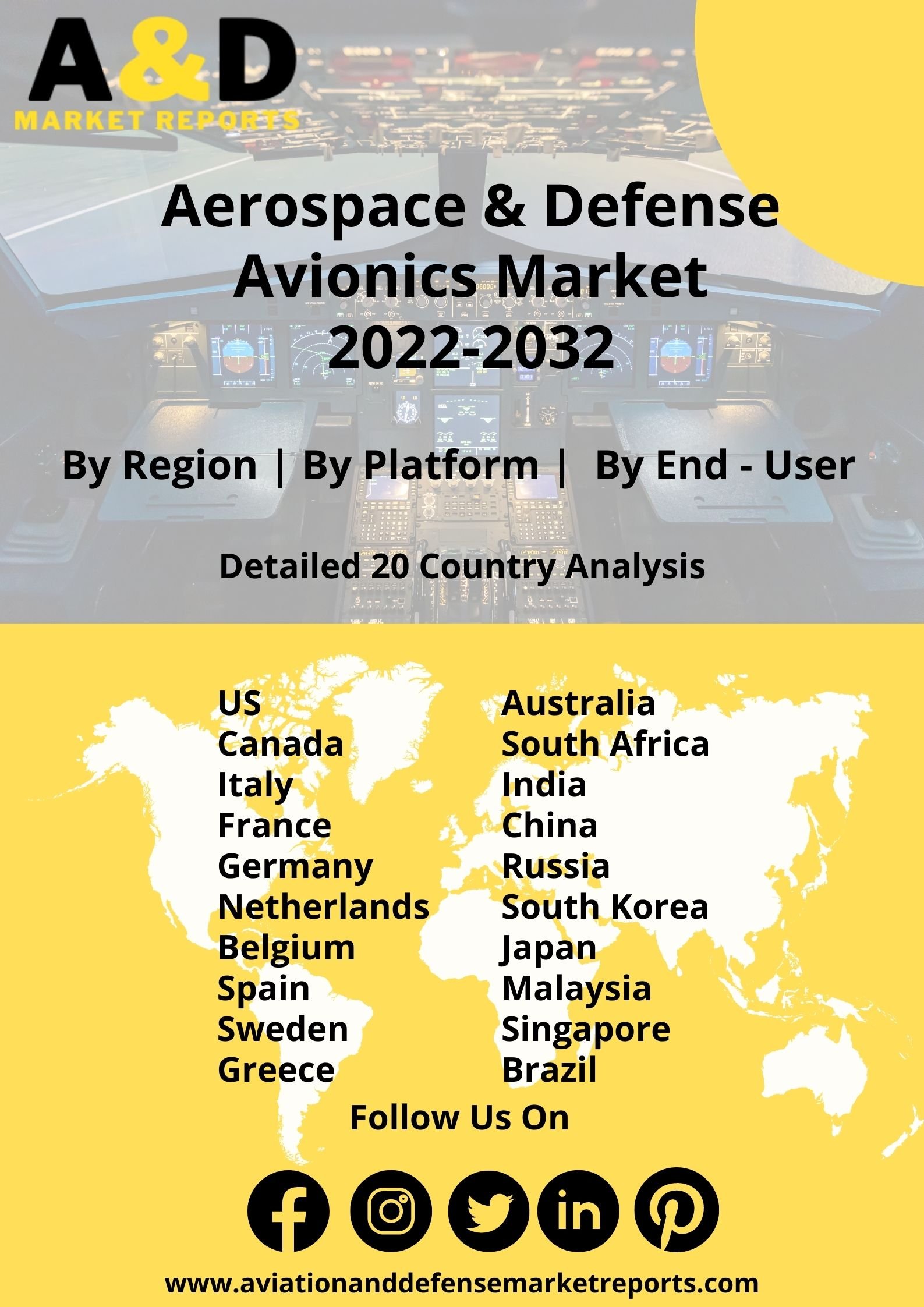Description
Defense Avionics Market
Frequently Asked Questions of Defense Avionics
The electrical equipment found on aircraft are known as avionics—a combination of aviation and electronics. Communications, navigation, the management and display of various systems, and the hundreds of devices installed on aircrafts to carry out specific tasks are all included in the category of avionic systems. These can range in complexity from the tactical system for an airborne early warning platform. The attitude gyro and several gauges that indicate power, such as the tachometer (in propeller craft), torquemeter (in turboprops), and exhaust pressure ratio indicator, are included in the control apparatus (in turbojets).
The altimeter, Machmeter, turn and slip indicator, and various devices that display airspeed, vertical velocity, and angle of attack are examples of performance instruments. Two-way radios, which work throughout a large spectrum from high frequency (HF), through very high frequency (VHF), to ultrahigh frequency, are among the communication devices. They enable direct speech contact between the aircraft and the ground as well as other aircraft (UHF). Radar and instrument landing systems are two examples of electronic radio navigational technology.
Modern avionics that can be integrated on manned, unmanned, fixed-wing, and rotary-wing platforms to aid pilots in navigation and flight control, data and information transfer, and ‘Friend or Foe’ recognition functions in even the most complicated operational circumstances. Avionic systems that are modular and simple to integrate for all kinds of aerial platforms. Managing several sensors for real-time data distribution and collection for flight and mission planning and support. These systems are optimized for a wide variety of civil and military applications, from coastal surveillance and search and rescue to environmental monitoring and anti-submarine warfare, and they give operators total situational awareness to enable wise decision-making.
Major factors driving defense avionics market growth
The increasing proliferation of unmanned platforms will increase the demand for avionics systems, especially systems related to Intelligence, surveillance, target acquisition, and reconnaissance (ISTAR) mission control systems for integration on board manned and unmanned platforms to enable data collection, processing, and communication supporting planning and development of intelligence activities (surveillance and reconnaissance). Flexible, modular, and reconfigurable
Trends influencing the defense-avionics market size
An Open-Standard System Architecture (OSSA) is a method of architecture development that makes use of open standards to cut down on the cost and risk of owning weapons systems, postpone system obsolescence, and speed up the deployment of capability. An open systems strategy lowers the cost of weapon systems by enabling the use of widely used standards from numerous manufacturers.
Defense-Avionics Market Forecast & Dynamics
Increasing defense spending will drive the market for new procurement activities. Procurement will also be driven by prevailing geo political conditions in Europe and the Asia Pacific. Cross border aggression will give way to increased procurement of defense avionics systems in Europe and Asia Pacific region. Since defense avionics market size is part of a wide range of aircrafts such as fighters, bombers, transport aircrafts, helicopters and unmanned systems, there will be significant demand for avionics systems.
Defense Avionics Market Analysis for Recent Developments
According to the announcement, the 3,100 EDECUs will be upgraded during the course of the five-year deal. EDECUs are “flight critical computers with operating and application specific software that enhances engine operation, performance, and efficiency.” Through the end of the year, more than 2,000 EDECU orders will be fulfilled in accordance with the contract. Since 2013, Triumph has given the Army, Navy, and Coast Guard more than 7,000 EDECUs for the Apache, Black Hawk, Jayhawk, and Seahawk fleets.
The Republic of Korea and the Polish government entered into a contract on July 27 for Poland to purchase FA-50 fighter/attack aircraft from Korea Aerospace Industries (KAI). The contract, which has an estimated value of $2.5 billion, is a component of a larger $14.5 billion arms deal with South Korea that also calls for the purchase of K9 self-propelled howitzers and K2 main battle tanks. To equip three squadrons, Poland is purchasing 48 FA-50s, with the first 12 scheduled to arrive by the middle of 2019. According to Mariusz Blaszczak, deputy prime minister and minister of defense, KAI’s capacity to deliver the aircraft promptly was the deciding factor in Poland’s decision to purchase the FA-50.
The U.S. Air Force awarded the Textron Beechcraft AT-6E Wolverine Military Type Certification (MCT), a certification standard that will allow the light attack turboprop to continue being sold internationally. The Air Force is actively assessing the T-6 Texan II trainer’s two-seat, purpose-made, armed reconnaissance variant in permissive areas. This variant is developed by Textron Aviation Defense (NYSE: TXT) in Wichita, Kansas.
This robust growth is driven by several factors. Increased military spending, particularly in response to global conflicts, is propelling demand for advanced avionics systems. Additionally, militaries around the world are actively modernizing their fleets, replacing aging aircraft with platforms equipped with next-generation avionics. Furthermore, the integration of artificial intelligence, augmented reality, and cyber security solutions into defense avionics market trends is creating a new wave of innovation and propelling market expansion.
However, the defense avionics market forecast its own set of challenges. The high cost of research and development, coupled with complex supply chains and stringent regulatory requirements, can hinder market access for smaller players. Additionally, the rapid evolution of technology necessitates constant upgrades and investments, putting pressure on defense budgets.
Despite these challenges, the future of the global defense avionics market analysis appears promising. Continued technological advancements, coupled with the ever-present need for robust and reliable military platforms, are expected to fuel sustained growth in the coming years. As militaries strive for greater efficiency, precision, and situational awareness, advanced avionics systems will remain at the forefront of modern defense technology.







